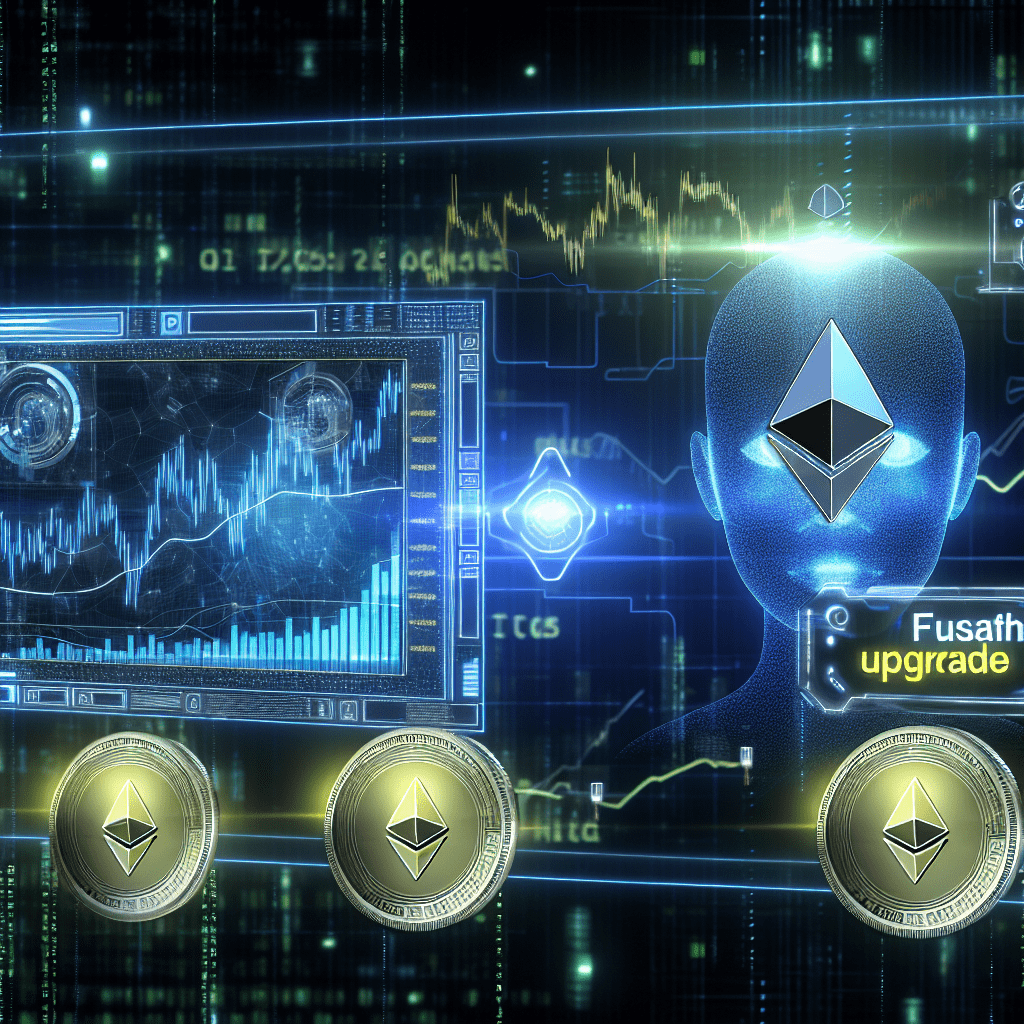Ethereum developers have officially announced December 3, 2025, as the date for the highly anticipated Fusaka upgrade. Traders are keenly monitoring to see if Fusaka can ignite the next significant rally.
The trading strategy provided was generated by AI, incorporating real-time market context, the historical effects of Pectra, and structured prompts aimed at minimizing human bias.
The outcome is a practical, step-by-step approach designed to assist new investors in entering Ethereum ahead of Fusaka, avoiding the temptation to chase the market or assume unnecessary risks.
What Is The Ethereum Fusaka Upgrade?
Sponsored
Sponsored
The Fusaka upgrade represents Ethereum’s next significant network update, aiming primarily to enhance scalability and reduce costs for both users and developers.
A key feature is PeerDAS (Peer Data Availability Sampling), which enables validators to verify only parts of extensive data blobs instead of downloading them entirely.
This upgrade will alleviate hardware demands and enhance the efficiency of the Ethereum network.
Additionally, Fusaka will expand blob capacity, allowing rollups and Layer-2 solutions to submit more data at diminished costs.
These modifications collectively bring Ethereum closer to its long-term scaling roadmap, termed “the Surge.”

Ethereum Investment Strategy Before Fusaka
Sponsored
Sponsored
1. Understand the Context
- Ethereum trades within the $4,400–$4,600 range in September 2025.
- Historically, Ethereum upgrades (Shanghai, Pectra) spurred short-term rallies, followed by profit-taking.
- Fusaka is centered on scalability (PeerDAS, increased blobs), benefiting Layer-2 rollups and decreasing transaction costs. This presents a bullish long-term catalyst, though upgrades may also prompt “sell the news” events.
Takeaway: New buyers should consider structured, phased exposure instead of going all in.
2. Entry Strategy: Phased Buying (Dollar-Cost Averaging)
As ETH is currently “expensive,” new buyers should stagger their entries.
Example: $1,000 fund size (customizable to any amount):
Sponsored
Sponsored
- 40% ($400): Gradually purchase across September–October (before testnet results). Spread into weekly buys to average entry around $4,400–4,600.
- 30% ($300): Hold through November. This period typically sees hype for Fusaka. Allocate buys on dips (if ETH re-tests $4,200–4,300).
- 20% ($200): Reserve as dry powder in case of a significant ETH dip following Fed meetings or into December.
- 10% ($100): Optional — invest in a high-conviction Layer-2 token (Arbitrum, Optimism, or Base ecosystem projects), which may experience greater gains from Fusaka’s advantages.
Result: You disperse risk, capitalize on dips, and lessen the regret of pursuing peaks.
3. Trading Strategy: Core + Swing Approach
- Core position: Maintain at least 50–60% of total ETH purchased untouched until Q1 2026 for exposure to longer-term upside ($5,500+ if the adoption narrative for Fusaka unfolds).
- Swing position: Utilize the remaining 40–50% to trade around resistance points.
Example (continuing with $1,000 plan):
- Core holding: $600 ETH, either stake or store in cold storage.
- Swing trading: $400 ETH. If ETH breaks $4,700 and approaches $5,000, sell 25% ($100) to secure profit. However, if ETH dips to $4,300, reinvest that $100. This approach allows you to accumulate ETH over time while still capitalizing on rallies.
4. Staking Strategy (Optional for Long-Termers)
Sponsored
Sponsored
- If planning to hold ETH beyond Fusaka, consider staking ETH (via Lido, Rocket Pool, or directly).
- Current annualized staking yield: ~3–4%.
- For a $1,000 example, staking $600 core ETH generates ~$18–24/year. Though small, it compounds over time and provides exposure to staking incentives.
5. Risk Management
- Never invest 100% in a single entry. Even with an ETH rally, staggered buying minimizes downside risk.
- Define exit levels: Take partial profits near $5,000–$5,200. Reinvest if ETH falls to $4,200–$4,300.
- Monitor macro factors: Shifts in Fed policy, ETF flows, or corrections in Bitcoin prices could affect ETH. Always maintain a 10–20% cash reserve.
6. Psychological Edge
- Avoid chasing green candles — it’s preferable to miss the top 5% of gains than to get caught in a 20% correction.
- Consider Fusaka a multi-month catalyst (Oct → Jan). Patience is more crucial than trying to time a singular rally.
Summary Plan for First-Time Buyers
- Distribute investments in phases: 40% now, 30% next month, 20% pre-Fusaka, and 10% for optional L2 bets.
- Maintain a core position (50–60%) until after Fusaka, using the remainder for swing trading.
- Capitalize on dips around $4,200–4,300 to scale in and take profits if ETH exceeds $5,000.
- Consider staking ETH for long-term holdings beyond the upgrade.

